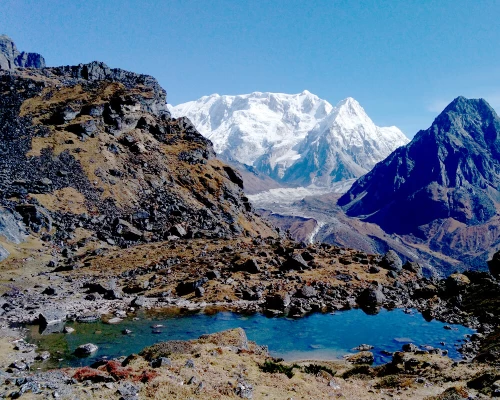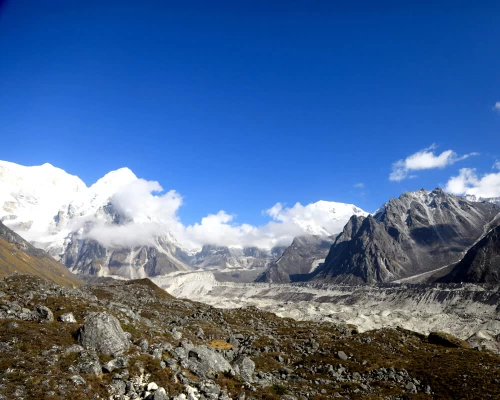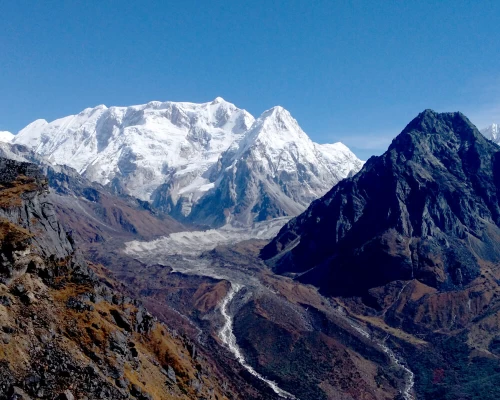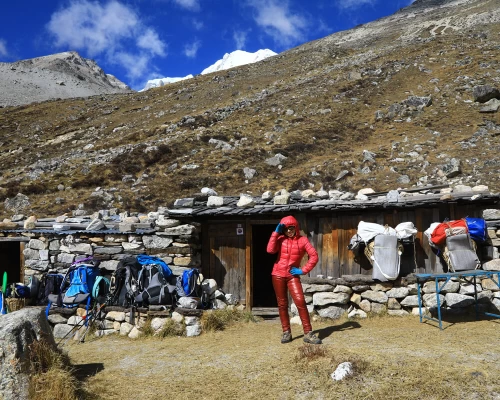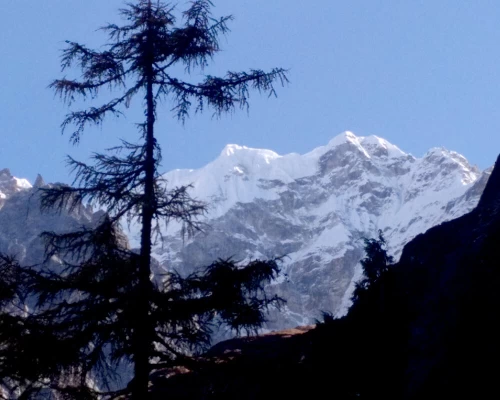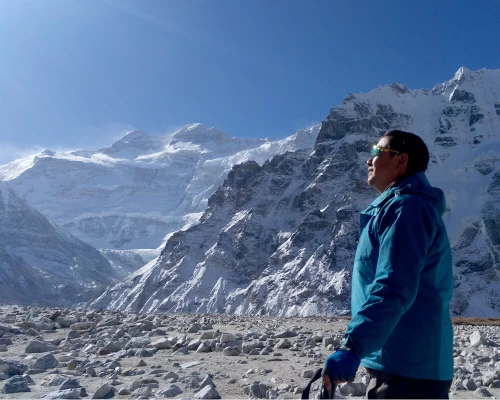After Mount Everest, Kanchenjunga (8,586 meters/28,169 feet) is Nepal’s highest mountain. This colossal mass of rock and ice is the third tallest in the world. Cradled between Nepal and Sikkim, India, our 27-day Kanchenjunga Trek takes you through some of Nepal’s least developed areas. This marathon of a trail passes through all sorts of landscapes, combining both the Kanchenjunga North Base Camp Trekand the Kanchenjunga South Base Camp Trek.
The trail provides a bit of everything, as we traverse raging rivers, and climb along wide valleys and terraced rice fields, culminating in a prolonged excursion far above the treeline, where we reach Kanchenjunga Base Camp (KBC) Pang Pema (5140 meters). Here, we have a jaw-dropping view of over 16 Himalayan peaks, including Everest (8848 meters), Makalu (8481 meters), Jannu (7710 meters), Kabru (7412 meters), and Tharpu Chuli (Tent Peak) (5663 meters), among many more.
During the journey, we move from tropical jungles to rhododendron and oak forests, and eventually into the alpine zone, where little to no vegetation exists. Along the way, we visit Rai, Limbu, and Tibetan villages. These groups speak their dialect and practice different religions and customs than most Nepali people. They greet us with their superb hospitality and serve us delicious Nepali food items. Who knows, maybe they’ll share or story or two about the elusive Yeti, as well as a couple of cups of Tongba, locally made hot millet wine. As for wildlife on the trek, we may encounter Impedance Pheasant, Red-Billed Blue Magpie, Himalayan black bear, Musk Deer, and even the Red Panda.
Before beginning the trek, we take a night bus to Birtamod and drive further to Suketar the following day. We then walk on the lowlands, hiking past terraced agriculture fields and charming villages up to a ridgeline full of rhododendron forests. Gaining elevation, Everest, Lhotse, Makalu and Kanchenjunga(four of the world’s five tallest mountains) make their presence known. We are filled with glee while sharing their beautiful presence. Their sheer size will have your eyes wide open, and you may never forget the first moment you see these mountains.
We reach Yalung Glacier and cross a series of passes, and suddenly the views become more incredible. The trail reaches Pang Pema (5140 meters), the base camp for Kanchenjunga climbing expeditions. Soon after, we cross the Lapsang La Pass over to the south side of Kanchenjunga. On our descent, we stop at the yak pastures of Ramche, where there are views of the southwest face of Kanchenjunga, considered to be one of the most beautiful mountain massifs in the world. This view will leave you with an everlasting memory.
NOTE: If you would like to skip the night bus and fly to Biratnagar and take a shorter drive to Suketar, we can change the package to cater to your needs.




